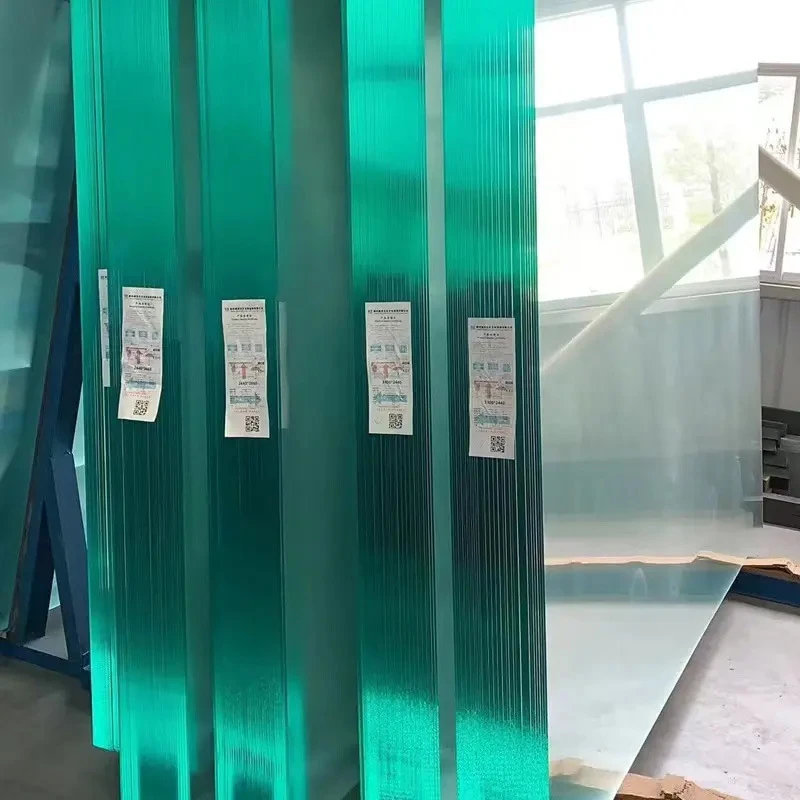The Allure of Blue Float Glass A Comprehensive Exploration
Blue float glass is a unique and captivating material that has garnered attention for its aesthetic and functional qualities. As an innovative variant of traditional glass, blue float glass is characterized by its striking hues and remarkable clarity, making it a popular choice in architecture, interior design, and various industrial applications. In this article, we will explore the origins of float glass, the significance of its blue variant, and its diverse uses across different sectors.
The Evolution of Float Glass
The process of float glass production was developed in the 1950s by Sir Alastair Pilkington. This revolutionary technique involves melting raw materials such as silica sand, soda ash, and limestone, which are then floated on molten tin to create a smooth, flat surface. The result is a sheet of glass that is uniform in thickness and has incredibly low distortion. This innovation transformed the glass manufacturing industry, enabling the production of high-quality glass sheets in large dimensions.
The introduction of colored float glass, including the mesmerizing blue variant, added new dimensions to this already versatile material. The blue coloration is achieved through the addition of cobalt oxides or other metal oxides during the melting process, introducing both visual appeal and functional qualities.
The Aesthetic Appeal of Blue Float Glass
One of the most compelling reasons for the popularity of blue float glass is its aesthetic charm. The various shades of blue, ranging from light azure to deep navy, can evoke different emotions and cater to distinctive design preferences. The calming nature of blue is well-known; it often symbolically represents serenity, trust, and stability. This makes blue float glass especially appealing in spaces designed for relaxation and contemplation, such as spas, meditation rooms, and healthcare facilities.
Moreover, blue float glass elegantly integrates into a variety of architectural designs. Its reflective qualities can enhance the beauty of facades, allowing buildings to shimmer in the sunlight while providing a contemporary, sleek appearance. Architects and designers frequently leverage blue float glass to create dynamic skylines, striking commercial properties, and luxurious residential homes.
Functional Advantages
blue float glass
Beyond its aesthetic characteristics, blue float glass offers multiple functional advantages. One notable benefit is its energy efficiency. Blue-tinted glass can help control heat and light transmission, which is crucial in energy-conscious building design. By reducing glare and minimizing solar heat gain, blue float glass can contribute to a more comfortable indoor environment, thereby lowering reliance on heating and cooling systems.
Additionally, blue float glass provides excellent UV protection, filtering out harmful ultraviolet rays that can fade furnishings and artworks, and potentially harm occupants. This characteristic makes it particularly suitable for museums, galleries, and display environments where protecting valuable items is paramount.
Applications Across Industries
Blue float glass is utilized in a wide range of applications across various sectors. In the construction industry, it is often used for windows, curtain walls, and skylights. Its aesthetic appeal can enhance exterior designs while its functional properties ensure energy efficiency and UV protection.
In interior design, blue float glass can be found in a variety of features, from backsplashes in kitchens to elegant table tops. This versatile material can also be used in furniture design, contributing to a modern and sophisticated look.
The automotive industry has also embraced blue float glass, employing it in windshields and side windows. The use of tinted glass can enhance passenger comfort while adding an element of style.
Conclusion
In summary, blue float glass is a fascinating material that beautifully marries aesthetic appeal with functional advantages. Its evolution from traditional float glass to a colorful variant has opened new opportunities for architects, designers, and artisans alike. As we continue to seek out sustainable and energy-efficient solutions in our built environments, blue float glass stands out as a versatile option that meets both decorative and practical needs. Its ability to transform spaces while enhancing comfort ensures that blue float glass will remain a popular choice in both commercial and residential applications for years to come.
 Afrikaans
Afrikaans  Albanian
Albanian  Amharic
Amharic  Arabic
Arabic  Armenian
Armenian  Azerbaijani
Azerbaijani  Basque
Basque  Belarusian
Belarusian  Bengali
Bengali  Bosnian
Bosnian  Bulgarian
Bulgarian  Catalan
Catalan  Cebuano
Cebuano  Corsican
Corsican  Croatian
Croatian  Czech
Czech  Danish
Danish  Dutch
Dutch  English
English  Esperanto
Esperanto  Estonian
Estonian  Finnish
Finnish  French
French  Frisian
Frisian  Galician
Galician  Georgian
Georgian  German
German  Greek
Greek  Gujarati
Gujarati  Haitian Creole
Haitian Creole  hausa
hausa  hawaiian
hawaiian  Hebrew
Hebrew  Hindi
Hindi  Miao
Miao  Hungarian
Hungarian  Icelandic
Icelandic  igbo
igbo  Indonesian
Indonesian  irish
irish  Italian
Italian  Japanese
Japanese  Javanese
Javanese  Kannada
Kannada  kazakh
kazakh  Khmer
Khmer  Rwandese
Rwandese  Korean
Korean  Kurdish
Kurdish  Kyrgyz
Kyrgyz  Lao
Lao  Latin
Latin  Latvian
Latvian  Lithuanian
Lithuanian  Luxembourgish
Luxembourgish  Macedonian
Macedonian  Malgashi
Malgashi  Malay
Malay  Malayalam
Malayalam  Maltese
Maltese  Maori
Maori  Marathi
Marathi  Mongolian
Mongolian  Myanmar
Myanmar  Nepali
Nepali  Norwegian
Norwegian  Norwegian
Norwegian  Occitan
Occitan  Pashto
Pashto  Persian
Persian  Polish
Polish  Portuguese
Portuguese  Punjabi
Punjabi  Romanian
Romanian  Russian
Russian  Samoan
Samoan  Scottish Gaelic
Scottish Gaelic  Serbian
Serbian  Sesotho
Sesotho  Shona
Shona  Sindhi
Sindhi  Sinhala
Sinhala  Slovak
Slovak  Slovenian
Slovenian  Somali
Somali  Spanish
Spanish  Sundanese
Sundanese  Swahili
Swahili  Swedish
Swedish  Tagalog
Tagalog  Tajik
Tajik  Tamil
Tamil  Tatar
Tatar  Telugu
Telugu  Thai
Thai  Turkish
Turkish  Turkmen
Turkmen  Ukrainian
Ukrainian  Urdu
Urdu  Uighur
Uighur  Uzbek
Uzbek  Vietnamese
Vietnamese  Welsh
Welsh  Bantu
Bantu  Yiddish
Yiddish  Yoruba
Yoruba  Zulu
Zulu 

